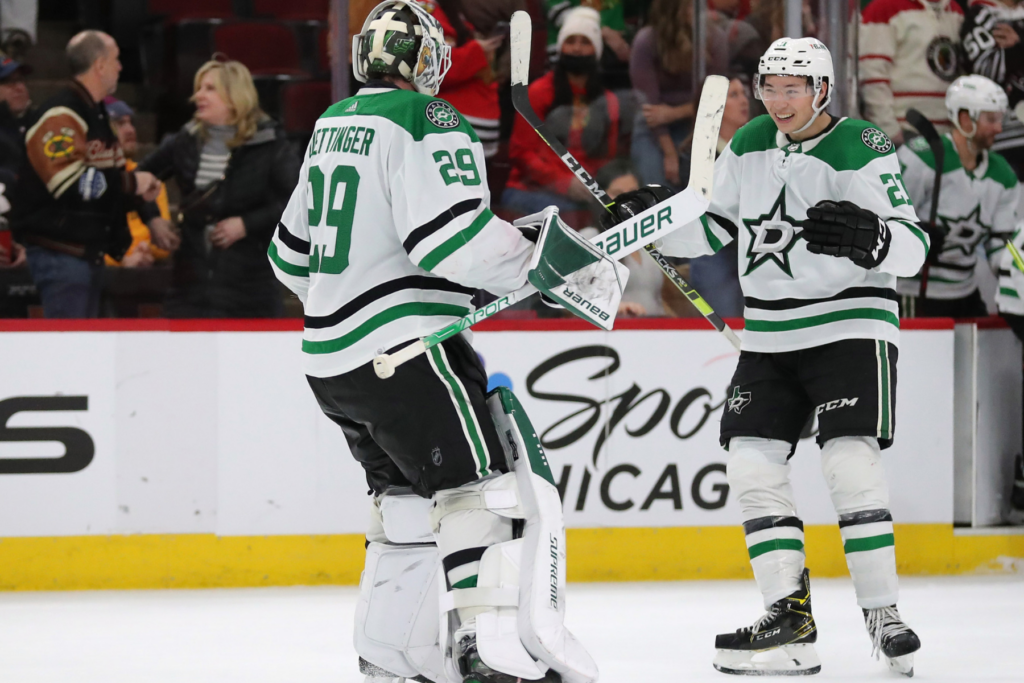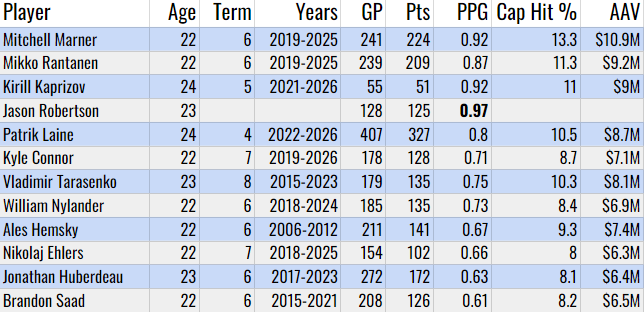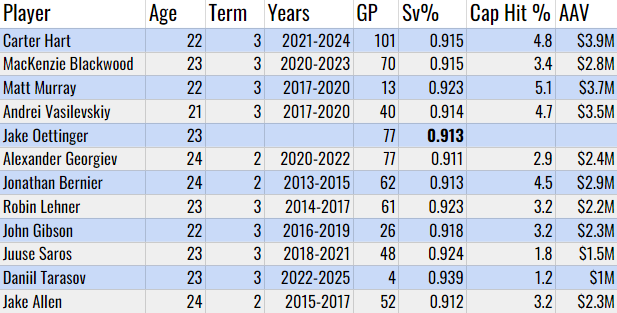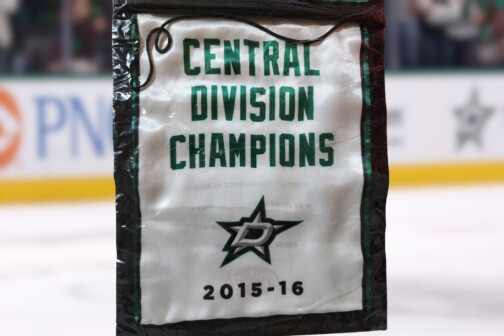When Jamie Benn was a restricted free agent in 2012, he went to Germany while awaiting his next contract. Back then, teams were preparing for a new way of doing business. A new collective bargaining agreement was on the horizon, and one of the critical new rules limited the term of player contracts to a maximum of eight years—a reaction to a spate of decade-long deals that allowed teams to circumvent the salary cap by front-loading contracts they would later buy out. Thirteen years later, the flat cap has brought a new sea change just as two of Dallas’ crown jewels enter restricted free agency.
Rest assured, you should not worry too much about Jason Robertson and Jake Oettinger remaining unsigned deep into the NHL offseason. Hockey is far removed from the day when a star like Mark Messier could stay at home until the team doubled his salary. Robertson and Oettinger are not going anywhere else, nor are they interested in going anywhere else. Right now, Robertson and Oettinger don’t have contracts. Nothing more, nothing less.
That doesn’t mean it will be easy to come to agreements that perfectly suit the player and team alike. Nor does it mean things won’t get messy. In 2013, the salary cap was $64 million. It’s now $82 million, and 94 percent of the cap’s growth happened within the first six seasons that followed, which forced GMs to tighten their spending over the last three years, culminating in this year’s historic lack of qualifying offers to some very good RFAs.
Not only is Jim Nill dealing with the new cap restrictions, but there’s a precedent for the worst-case scenario too. The best way for a player and his agent to gain leverage in negotiations like this is to put teams in a time crunch. Benn missed the first four games of the 2012-13 season to get his next contract. If Robertson winds up missing the first four games of this season, it would be less than ideal but hardly catastrophic. But what if Robertson misses the first 28 in a standoff that lasts just shy of the December 1 deadline? That’s exactly what happened with William Nylander of the Toronto Maple Leafs in 2018. There was a different level of bitterness there; both Nylander and Toronto’s front office were very public about their dispute. But Nylander was fresh off a pair of 61-point seasons at just 21 years of age. Only a handful of players were comparable at the time.
And, it turns out, even fewer are to Robertson. Inspired by an exercise by The Athletic’s James Mirtle, I used age, position, term, points, and games played to get a gauge for Robertson’s comps and what they make. Turns out, not a single winger around his age has produced at a similar rate in the salary-cap era.
Robertson is putting up historic numbers here—the sort that allow him to demand $9 million annually with a straight face. To avoid this, Dallas could sign Robertson to a bridge deal, the GM version of kicking the can down the road to create short-term flexibility. Except as we can see, bridge deals are rare: only Winnipeg’s Patrik Laine took one. Teams are betting big money on young talent more often than ever, and the flat cap surprisingly hasn’t curtailed that trend.
So you can expect Pat Brisson, Robertson’s agent, to point to that bolded points-per-game number and expect Nill to pay full freight. History says he’ll get something close to it, too. He grew up in Montreal flipping $2 necklaces for $7 a pop to gullible classmates. His first negotiation, on behalf of Luc Robitaille, increased the winger’s autograph appearances threefold from $500 to $1,500—a compromise after originally demanding $2,000. His clients are a who’s-who of players that got paid. Robertson deserves every penny, and Brisson knows how to get as many as possible.
So while I’m sure fans would love to see a bridge deal that ends in 2025—when Benn, Ryan Suter, Esa Lindell, and Radek Faksa’s deals (totaling $22 million) all come off the books—Robertson has little incentive to take it when he can reasonably demand his big-money deal immediately.
The knock-on effect of that deal would figure to be less guaranteed annual money in Oettinger’s pocket—only, from the sound of things, that’s where things are nonnegotiable for Oettinger and his team. Using the same template as the Robertson exercise below, we see Oettinger comes in on the lower end of a respectable group of peers.
Still, there’s that Game 7 against Calgary, which almost certainly upped his leverage. So Robertson has no need to budge. Oettinger has no desire to. What happens if everything remains status quo? In all likelihood, attaching assets to moveable contracts: the cap dump. That has not been one of Jim Nill’s strengths, but that’s gonna have to change. The good news is the market has been receptive to those kinds of moves this offseason. We just saw the Calgary Flames make room for Nazem Kadri’s $7 million salary by shipping out Sean Monahan’s $6.3 million to Montreal at the cost of a conditional 2025 first-round pick, which is both a high price and, historically, the going rate. (When Toronto needed to move Patrick Marleau’s $6.2 million salary in 2019, it cost them a first-round pick and that was before COVID caused the flattening of the cap.) The 2023 draft is shaping up to be one of the best in more than a decade, and Chicago, Arizona, and Buffalo all have the requisite cap space to take on money if Nill puts Dallas’ first-rounder on the table.
Except the Flames sacrificed that pick in the name of adding a player who could upgrade their roster. The Stars, in this scenario, would be doing so to stand still. You can see why, then, there isn’t a lot of confidence in management from Stars fans these days. And so I find myself thinking back to the trade deadline, because it felt so emblematic of the Stars’ middle-of-the-road vision. If they bought, they probably beat Calgary and potentially go on a deeper run than anyone expected. If they sold, they would have more assets and perhaps the requisite room to sign Robertson and Oettinger with ease.
Instead, they lost in the first round like most wildcard teams do and now are left with the same problems. The biggest? Trying to have their cake and eat it, too, by refusing to bottom out but not pushing their chips in, either. No matter what deals they ultimately sign, Robertson and Oettinger’s next contracts will only matter so much without a commitment to simply staying in the playoff hunt.
Which is trickier in the new flat-cap world, of course. But just like the other 31 teams, it’s on Dallas imagine a new way of building a contender. Robertson and Oettinger have done their part. The rest is on Dallas to figure out what kind of team they’re building around them and how sharp that vision is to build something better. A cap-friendly deal makes no difference without a Cup-friendly roster.
Get the ItList Newsletter
Author








